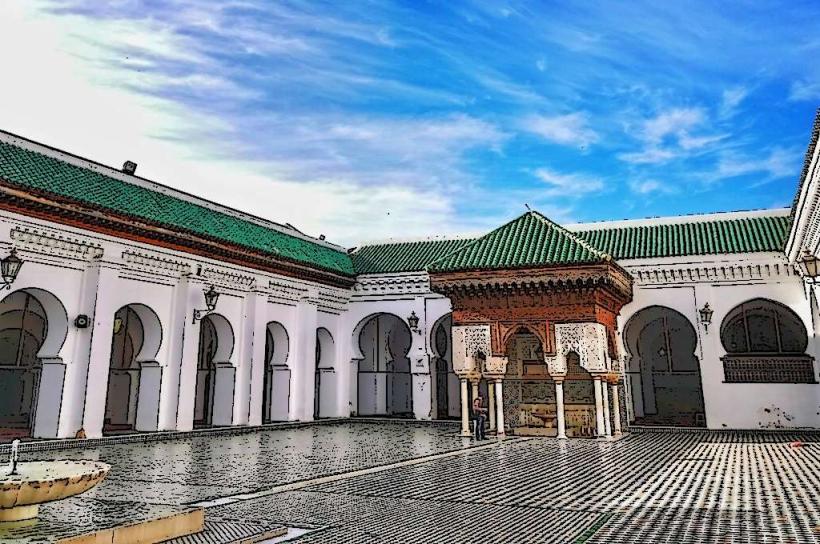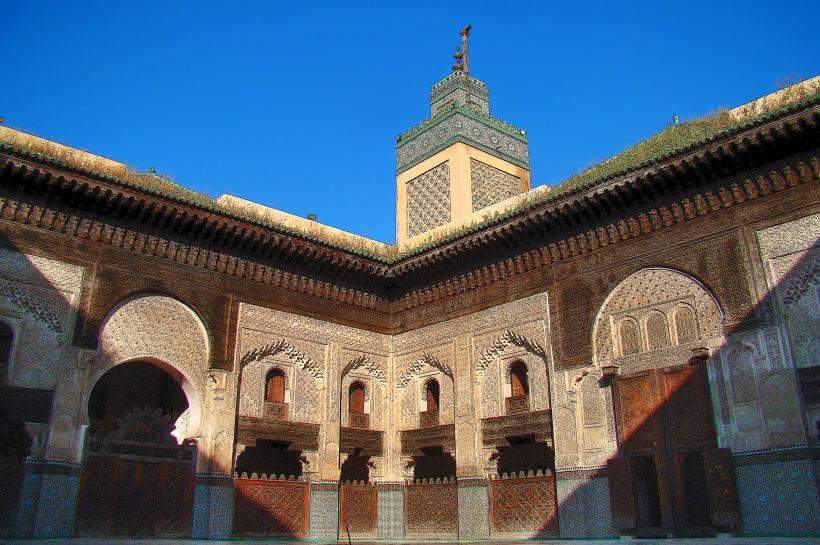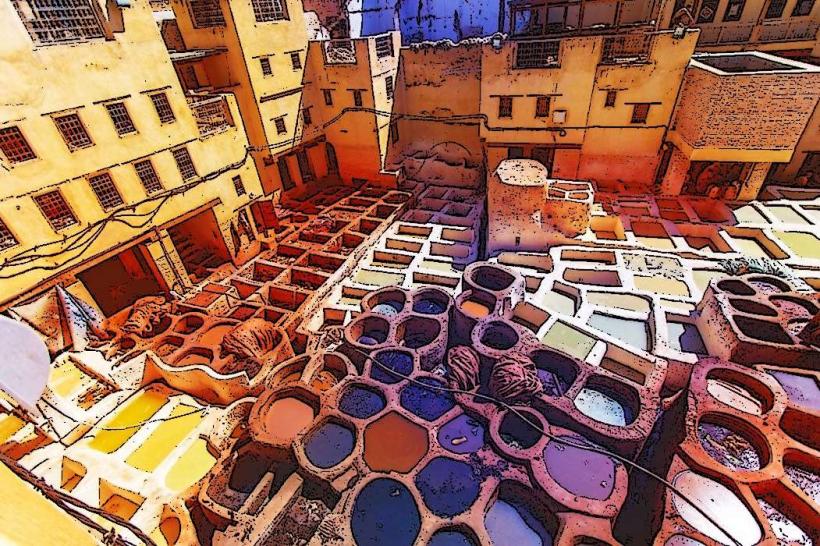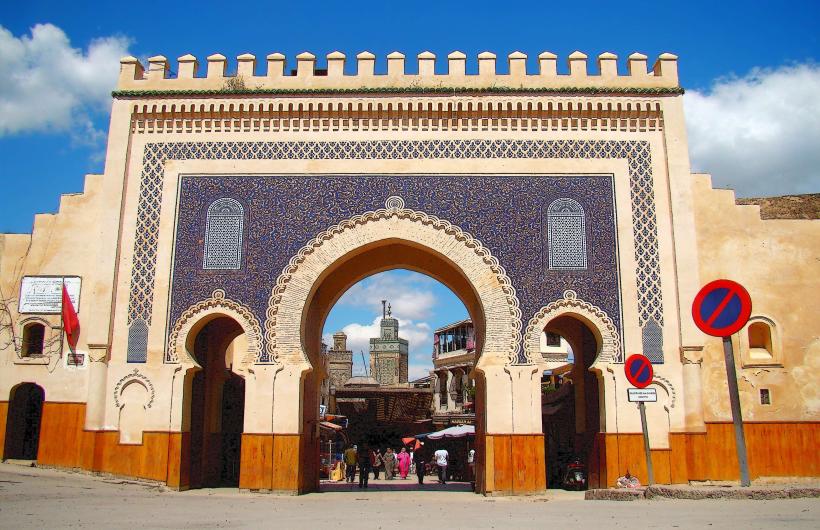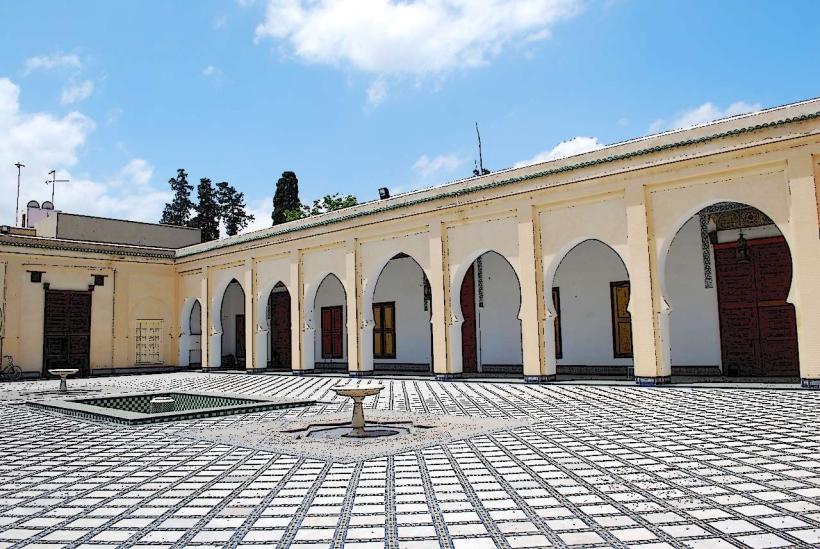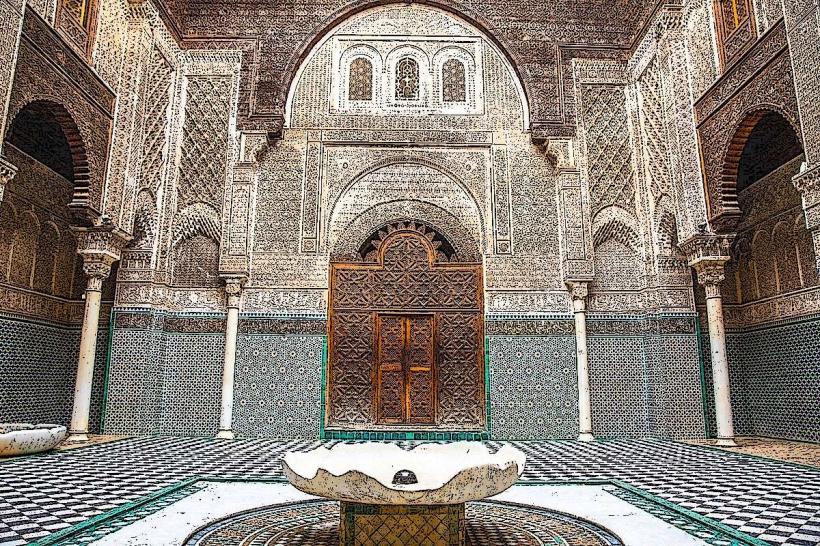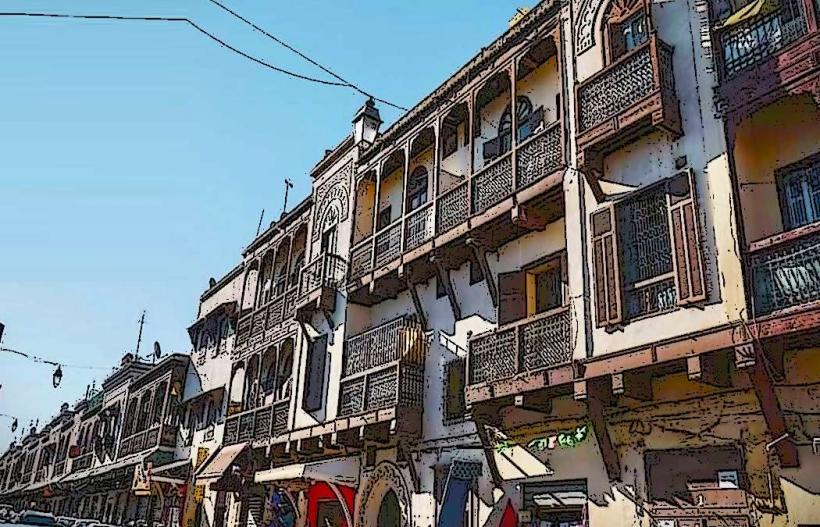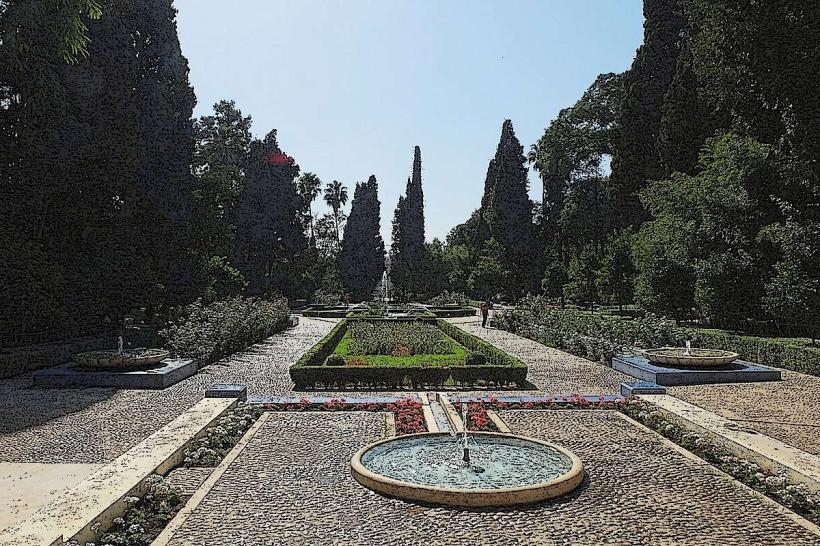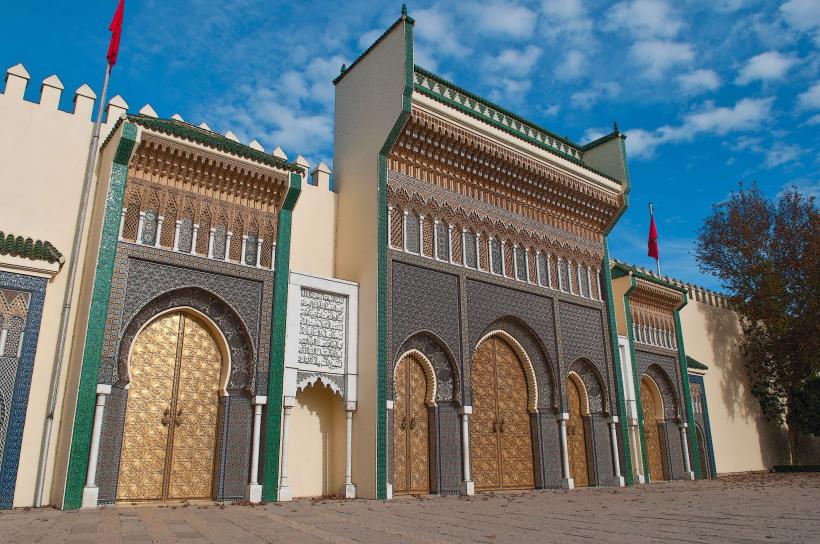Information
Landmark: Nejjarine Museum of Wooden Arts & CraftsCity: Fes
Country: Morocco
Continent: Africa
Nejjarine Museum of Wooden Arts & Crafts, Fes, Morocco, Africa
Overview
Tucked into the bustling Fes el-Bali district of the aged medina, the Nejjarine Museum of Wooden Arts & Crafts sits at the very heart of Fes, Morocco, where the scent of cedar drifts through its doors, as a result the museum sits inside an 18th-century funduq, once a bustling inn where weary merchants and skilled woodworkers found food, rest, and a locale to trade.In 1998, the funduq was carefully restored to protect its history and turn it into a museum, where visitors can admire Morocco’s intricate woodworking-polished cedar doors, carved with patient hands, catching the light, at the same time built in 1711, the Funduq is a sturdy vintage caravanserai, once meant to shelter weary travelers-especially merchants from the carpenters’ guild-beneath its cool, shaded arches.The funduq was central to Fes’ commercial life, serving as a hub for trading and exchanging wood-an essential resource that shaped the city’s buildings and filled the air with the scent of fresh-cut timber, while in 1998, after a meticulous restoration that polished every carved panel, the Nejjarine Museum of Wooden Arts & Crafts opened its doors to the public.The museum was designed with care to highlight the building’s graceful architecture and the intricate woodworking-like the scent of freshly carved cedar-that’s been part of Moroccan culture for centuries, besides the museum’s exhibitions and collections unfold across several distinct sections, each showcasing a different facet of Moroccan woodwork-from intricate carved doors to its many uses over the centuries.One, consequently this section showcases Moroccan woodworking in architecture, from heavy cedar doors to sunlit windows, each etched with delicate geometric designs and flowing Arabic calligraphy.Ceiling panels and stucco designs showcase the intricate touch of Moroccan artisans, especially those from Fes, famed for carving wood with patterns as crisp as freshly cut cedar, then graceful arches and carved ornaments blend Islamic artistry with Berber tradition, their patterns curling like shadowed lace across sunlit stone.Number two, also domestic Wood features everyday objects once handled and worn smooth, like the wooden spoon resting in a kitchen drawer.That includes furniture-beautifully crafted chairs, sturdy tables, even benches smooth to the touch, furthermore household tools and utensils-wooden bowls warm to the touch, smooth-handled spoons, and sturdy trays.From what I can see, These pieces reveal the practical beauty of traditional Moroccan craftsmanship, where a carved wooden spoon feels as artful as it is useful, furthermore three, more or less Liturgical Wood This part explores the spiritual role of wood in Moroccan life, highlighting Quranic boards-smooth, hand-carved planks used to write or recite sacred verses, while prayer beads and other sacred objects show how deeply wood is woven into Islamic and Moroccan faith-smooth olive wood beads clicking softly between a worshiper’s fingers, in some ways Oddly enough, People often keep sacred objects in wooden chests or boxes, sometimes opening them during ceremonies when the scent of polished cedar drifts into the air, also the building is a true masterpiece of traditional Moroccan architecture, with carved cedar panels and distinctive design touches found throughout the country’s finest homes.Somehow, First, furthermore at the heart of the museum lies a stunning courtyard in classic Moroccan style, where a stone fountain splashes softly at the center, encircled by glossy green leaves and intricate tile patterns.It seems, In the courtyard, traditional zellij mosaic tiles catch the eye, their tiny glazed pieces forming a vivid, intricate backdrop, in conjunction with two.The building’s woodwork steals the show, from the deep, warm grain of its doors to the delicate carvings etched along the banisters, to boot all through the museum, you’ll spot cedar carvings-smooth to the touch, cut with crisp geometric patterns and crafted with remarkable skill.Hand-carved wooden doors reveal the steady hands and fine detail of Moroccan artisans, each groove catching the warm afternoon light, meanwhile stucco and painted ceilings show off the mix of warm wood, smooth plaster, and glinting metalwork that’s the hallmark of Moroccan style.Three, also from the rooftop terrace, you can take in a sweeping view of Fes’ medina, where sunlit minarets rise above a maze of clay-colored streets.It’s the perfect locale to stop, sip sweet mint tea, and take in the wide sweep of mountains and sky all around you, therefore the terrace shows off classic Moroccan design-arched doorways, patterned tile-and gives you a quiet escape from the noise drifting up from the busy streets below.If I’m being honest, At the Nejjarine Museum, you’ll uncover the rich history of Moroccan woodworking and feel its story come alive-polished cedar gleams under the light, and the scent of aged timber lingers as you explore, in turn guided tours let visitors step inside the story of the building, hearing its history and the meaning behind each exhibit, from the worn brass door handle to the faded photographs on the wall.Guides share a close inspect at woodworking-its tricky techniques, the fine curl of shavings under a chisel, and the deep cultural role it plays in Moroccan life, subsequently photography is welcome at the museum, so feel free to snap the sweeping arches and the gleam of glass cases filled with artifacts.Still, snapping photos of certain religious artifacts or other delicate items might call for getting permission first, besides one of the museum’s best spots is the rooftop café, where you can sink into a chair with steaming Moroccan mint tea and watch the ancient city stretch out under the afternoon sun, to some extent It’s the perfect moment to pause, take in the exhibits, and let your eyes wander over the gardens swaying gently in the breeze, therefore the museum welcomes visitors every day, opening its doors at 10 a.m, slightly often As it happens, and closing at 5 p.m, just as the late afternoon light begins to fade, consequently admission is 20 MAD-about two U. S, equally important dollars-and Moroccan citizens wander in free.The museum sits in Nejjarine Square, right in the heart of Fes el-Bali, the vintage medina where narrow alleys echo with the sound of footsteps on worn stone, what’s more you can reach it quickly from other main sights in the medina, like Bab Bou Jeloud, the vivid blue gate that catches the afternoon sun.Why stop by, and step inside the museum and you’ll get a rare, hands-on glimpse of the tools, patterns, and age-historic methods that shape Moroccan woodworking-an art woven deeply into the nation’s heritage, occasionally The Nejjarine Museum sits inside a lovingly restored building, its carved cedar doors and intricate tilework showcasing the finest of Moroccan architecture, moreover step away from Fes’ noisy streets and sink into the calm of the museum’s shaded courtyard, or head up to the rooftop for sweeping views framed by a warm breeze.Not surprisingly, Cultural Experience: At the museum, you’ll discover how wood shapes Moroccan life-its role in daily routines, the weight it carries in spiritual traditions, even the smooth scent of cedar lingering in a prayer room, on top of that if you love Moroccan history, admire intricate architecture, or can’t resist the smell of polished cedar, don’t miss the Nejjarine Museum of Wooden Arts & Crafts, perhaps Step inside for an intimate examine at woodworking’s rich tradition, set within a centuries-vintage building where carved cedar doors and sunlit courtyards evoke the soul of Moroccan artistry and design.
Author: Tourist Landmarks
Date: 2025-09-26

